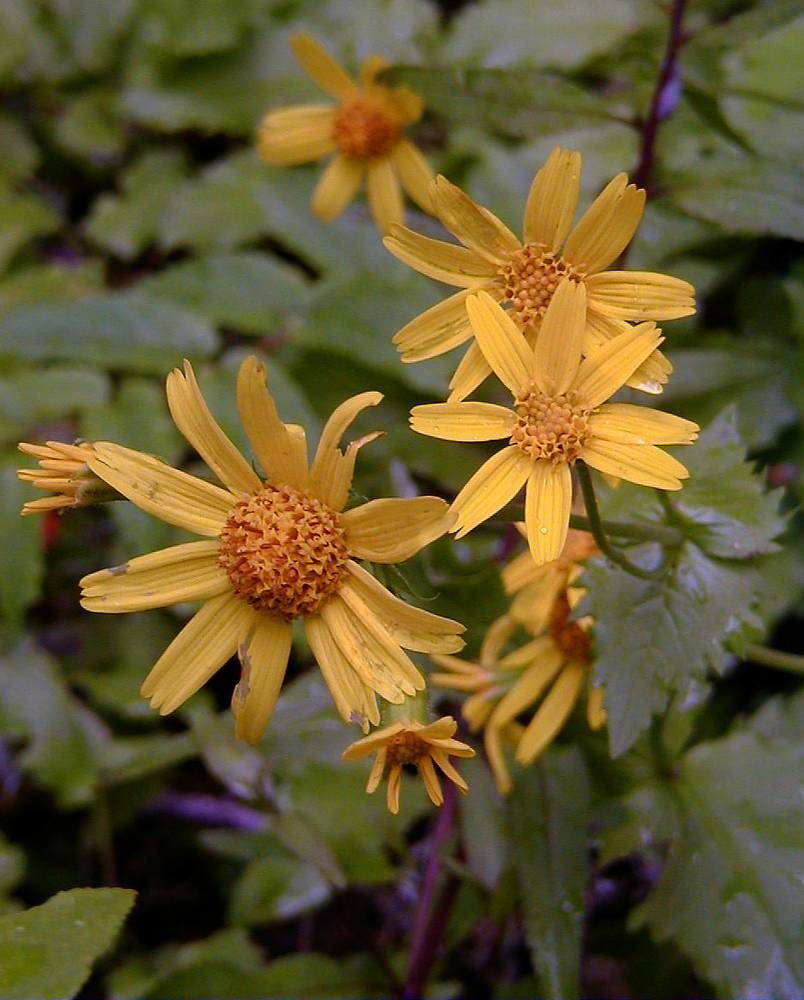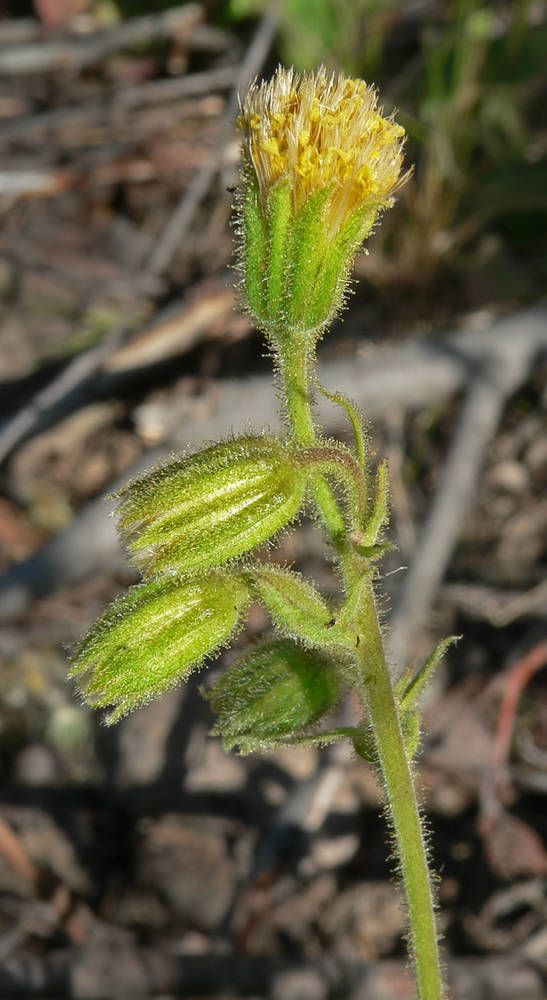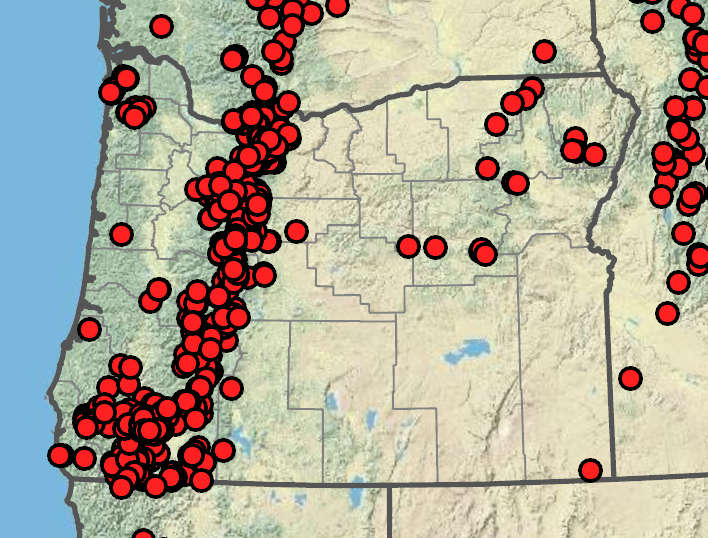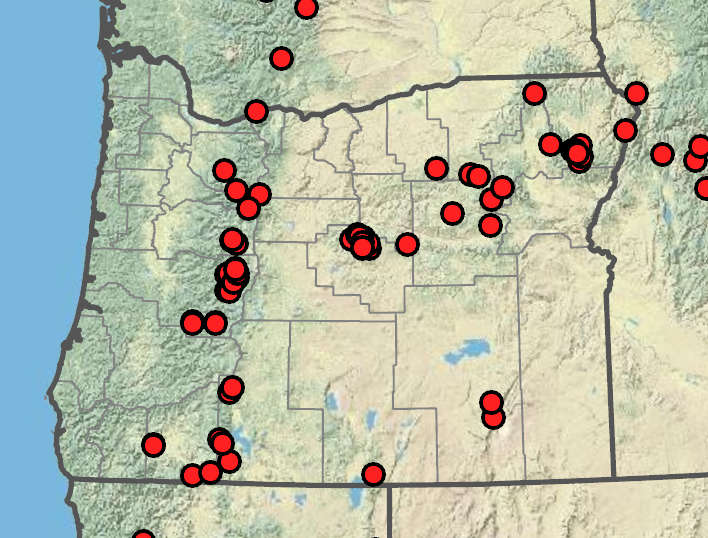Arnica latifolia
Arnica parryi
broadleaf arnica, mountain arnica
Parry's arnica
usually simple, sometimes branched, glabrous to puberulent or villous.
simple to much branched, villous, stipitate-glandular distally.
withering early, usually in separate sterile rosettes, petiolate.
withered by flowering, often in separate sterile rosettes, petiolate or subsessile.
2–4 pairs;
blades ovate, lanceolate, or elliptic, 1.5–14 cm, bases rounded to attenuate, rarely truncate or cordate;
margins entire to denticulate, dentate, or serrate;
veins branching laterally;
tips acute;
surfaces glabrous to puberulent or strigose;
adaxial surfaces sometimes densely and minutely strigillose; most sessile; lower pair sometimes subsessile.
2–4 pairs; lowermost crowded near stem bases; upper pairs much reduced;
blades ovate to lanceolate or linear-elliptic, 2–10 cm, bases rounded or attenuate;
margins entire or denticulate;
veins branching laterally;
tips acute;
surfaces villous-tomentose, sparsely stipitate-glandular or gland-dotted adaxially; lowermost long-petiolate; upper sessile.
glabrate or villous, sometimes glandular-puberulent at apex.
stipitate-glandular.
cylindric to campanulate or hemispheric, 8–15 mm.
campanulate, 10–15 mm.
5–15;
rays 10–28 mm, yellow.
0 or obscure.
20–90;
corollas 6–10 mm, yellow.
20–60;
corollas 8–10 mm, yellow.
broadly or narrowly lanceolate to oblanceolate, elliptic, or linear;
tips acute or acuminate;
surfaces glabrous to pilose or villous, sometimes tomentulose or glandular-puberulent at bases.
narrowly oblanceolate to elliptic or linear;
tips acute or acuminate;
surfaces stipitate-glandular, sometimes also hispid.
columnar-fusiform, 5–9 mm, dark brown, glabrous to glandular-puberulent;
pappus bristles 5–7 mm, white, barbellate.
columnar-fusiform, 4–6 mm, dark brown or blackish, glabrous or hispid;
pappus bristles 7–10 mm; straw-colored, barbellate.
radiate.
discoid or rarely obscurely radiate, nodding in bud.
=38, 76.
=38, 57, 76.
Arnica latifolia
Arnica parryi
Coniferous forests, meadows, shrublands, cliffs, rocky talus, clearcuts, roadsides. Flowering May–Sep. 300–2300 m. BW, Casc, CR, ECas, Owy, Sisk. CA, ID, WA; north to AK, northeast to Alberta, east to WY, southeast to NM. Native.
Coniferous forests, meadows, ridges. Flowering Jun–Sep. 1200–2700 m. BR, BW, Casc, ECas, Sisk. CA, ID, NV, WA; north to Yukon, northeast to Alberta, east to WY, southeast to CO. Native.
Kenton Chambers
Kenton Chambers
- Local floras:
BC,
CA,
OR,
WA
- Local Web sites:
CalFlora,
CalPhotos,
Flora NW,
PNW Herbaria,
Turner Photog.
WildflowerSearch
iNaturalist (observations)
USDA Plants Database
- LBJ Wildflower Center
- SEINet
- Plants of the World Online
- Encyclopedia of Life
- Wikipedia
- Google Image Search
- Local floras:
BC,
CA,
OR,
WA
- Local Web sites:
CalFlora,
CalPhotos,
Flora NW,
PNW Herbaria,
Turner Photog.
WildflowerSearch
iNaturalist (observations)
USDA Plants Database
- LBJ Wildflower Center
- SEINet
- Plants of the World Online
- Encyclopedia of Life
- Wikipedia
- Google Image Search





